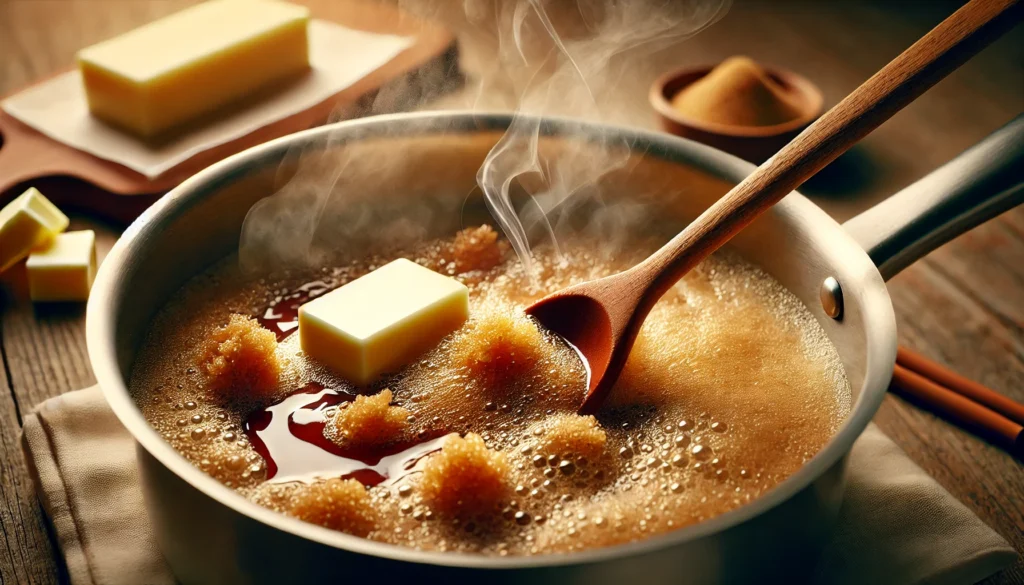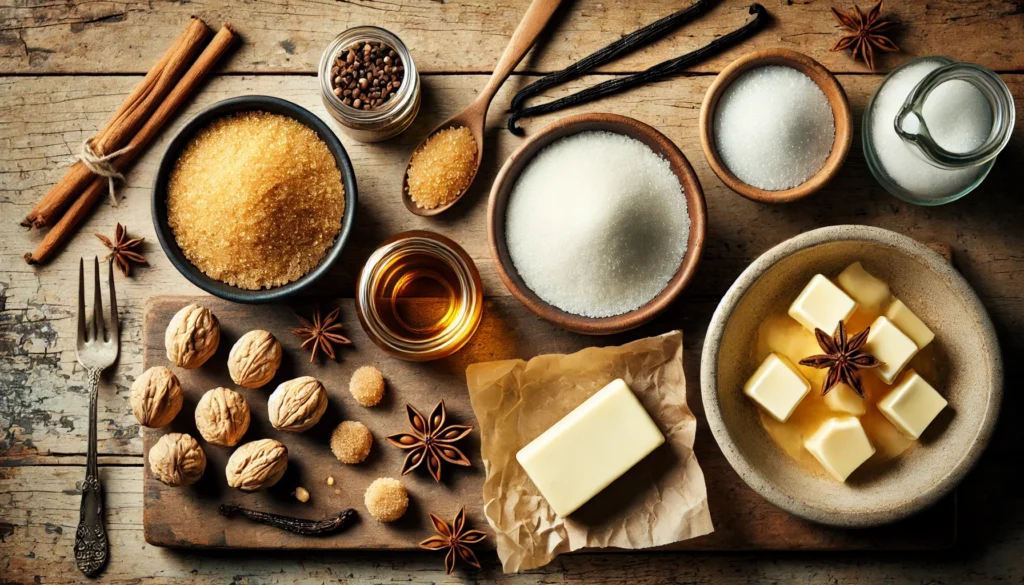Butterscotch has been a beloved flavor for generations. It offers a distinct, rich taste characterized by its buttery, sweet, and molasses-like notes. But what exactly gives butterscotch its unique flavor? In this article, we’ll explore its key ingredients, how the flavor develops, and how it compares to other sweet treats like caramel and toffee.
What is Butterscotch?

Butterscotch consists mainly of brown sugar and butter. When these ingredients combine, they create the deep, rich flavor we know and love. The name “butterscotch” likely comes from “butter” and “scorch,” describing how you cook the sugar and butter at a high temperature. The caramelization process brings out the molasses undertones.
You can easily make it at home by following this butterscotch recipe. Butterscotch flavors range from traditional hard candies to versatile sauces that elevate modern desserts.
Key Ingredients of Butterscotch
The ingredients in butterscotch work together to produce its unique flavor:
- Brown Sugar: The molasses content in brown sugar gives butterscotch a richer, deeper sweetness compared to white sugar.
- Butter: Butter contributes richness and creaminess to the mixture.
- Vanilla & Salt: Vanilla enhances the sweetness, while salt balances it out.
- Cream (optional): Cream helps create a smooth texture, especially in sauces.
Want to try butterscotch in another dessert? This butterscotch pie recipe showcases the creamy, rich flavors of butterscotch in a delicious, easy-to-make pie.
How Butterscotch Flavor Develops
Butterscotch flavor develops as the ingredients caramelize. Here’s a simple breakdown of how:
- Caramelization: When heated, the sugar caramelizes, creating deeper, complex flavors.
- Butter: Melting butter into the sugar results in a smooth, creamy texture.
- Cooking Temperature: Butterscotch is typically cooked to the soft crack stage, which gives it a softer texture compared to hard candies.
Cooking butterscotch involves a careful balance of heating the sugar just enough to develop flavor without hardening it.
Butterscotch vs. Caramel
While butterscotch and caramel seem similar, they have key differences:
- Brown Sugar vs. White Sugar: Butterscotch uses brown sugar, giving it a molasses-like depth. Caramel uses white sugar, producing a lighter flavor.
- Butter Content: Butterscotch contains more butter, giving it a creamier and richer texture.
- Temperature: Caramel is cooked to a higher temperature, reaching the hard crack stage, while butterscotch remains at a lower temperature.
For more detailed comparisons, check out this resource on the differences between caramel and butterscotch.
Uses of Butterscotch in Desserts
Butterscotch adds a rich sweetness to a variety of desserts. Popular uses include:
- Butterscotch Sauce: This thick, sweet sauce complements ice cream, cakes, and pies.
- Butterscotch Pudding: A creamy dessert made with brown sugar and cream.
- Butterscotch Pie: A rich, buttery pie filling made from butterscotch and topped with whipped cream.
For a classic butterscotch pie recipe, check out this easy butterscotch pie.
FAQs About Butterscotch Flavor
What gives butterscotch its distinct flavor?
The combination of brown sugar and butter gives butterscotch its molasses-like flavor.
How does butterscotch differ from caramel?
Butterscotch uses brown sugar, while caramel typically uses white sugar. The addition of more butter to butterscotch also creates a creamier taste.
Can butterscotch be made without cream?
Yes. The cream is optional in most butterscotch recipes, though it helps create a smooth texture in sauces and puddings.
Conclusion
Butterscotch’s rich, buttery flavor comes from the combination of brown sugar and butter, caramelized to perfection. Whether drizzled as a sauce, baked into a pie, or used as a candy, butterscotch continues to be a favorite in kitchens worldwide. Explore more delicious ways to incorporate butterscotch into your desserts on Samuel’s Recipes.


